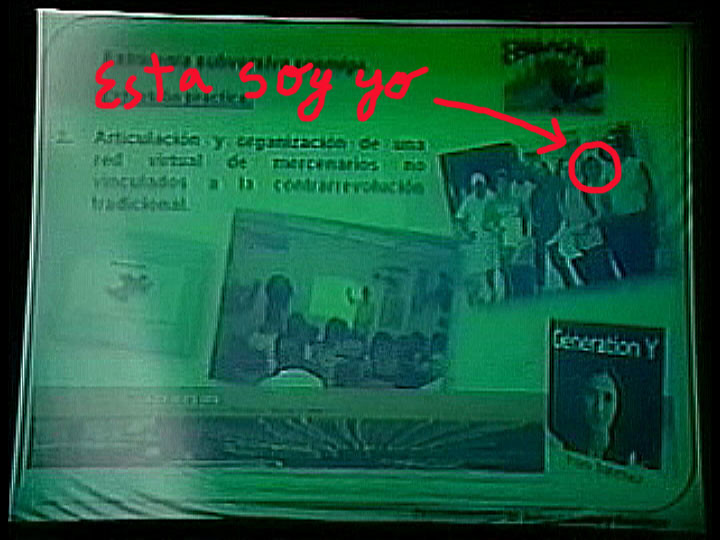 Photos: Francis Sánchez
Photos: Francis Sánchez
My watch was still running slow, probably because I needed to change the battery, so I went looking for a watchmakers when, about to turn a corner, I noticed that I was passing in front of a sort of bunkhouse, tenement block or similar poor dwelling. I remembered that there, years ago, lived Pedro Argüelles, one of the political prisoners convicted in summary trials in the dark spring of 2003. And the door was open. Some people bustled about in a family environment, filling or changing something in the narrow little living room where they could barely fit. His wife … was she still his wife? A quick glimpse inside was enough to see her running some home engineering operation just like she wore her age and her solitude. I went to greet her. A thin invisible line separated us.
It was the line of a fortuitous occasion and a door already open, but that separation, which at a simple glance seemed insignificant, surrounds like a moat those who dare dissent peacefully from a government which doesn’t permit individual liberties or fissures in power. Risking the step, to cross that dividing line, could only mean one thing: to fall, and I don’t know from what height — nobody knows until they touch bottom.
I sank myself in that grief that appears when feelings within the heart scrape against the fear of contagion, the instinct of self-preservation, and the passion or bravery that emanates from common human sense, with a difficult doubt to overcome. The doubt between finding myself before a temptation of demonic, self-destructive forces, or before a test of the angelic part of my soul where God still waits for payment on the debt that humanity has continued accumulating down the centuries of hate and injustice.
It all happened in a flash. A kiss and I ask her how she’s been. Such a curious sample of that liquid or gaseous state in which one can find any fellow man, resulting from the formula of colloquial greeting, ordinarily preferred and established in the street, but here it implicitly included her other half, or as it might be, him, someone sunk in a cell in the prison at Canaleta. This prison, which rises so close to the outskirts of this same city, shares its boundary with the cemetery inside the urban connection, like two complimentary variants of a city turned upside down.
He communicated with her sometimes by telephone. He was almost blind, he could only see out of one eye and very badly, to read he had to stick the paper to his face. And the day before he had been called, again, by Cardinal Jaime Ortega, with the proposal that the prelate had come whispering within earshot of the other prisoners sentenced throughout the country: march to exile. Argüelles — different from most of the others — had already rejected such an outcome, and this time — according to what she, his wife, was telling me — he refused even to come to the phone.
I’ve said that everything occurred in a flash. But I could also say that I followed my path as someone who has been stabbed and doesn’t know it, he cannot or does not want to know from where the blow came. Does anyone have the right to offer, gladly, exile to another? I felt wounded not only as the Catholic that I am–of little standing, I wouldn’t recommend myself for any papal indulgence, though Catholic to the end, prepared to respond before any request for this religious identity that marks me in my transit through life and the labyrinth of the world.
I felt that pain, that nausea of frustration, that abyss which can lock itself in the chest of any person, independent of his ideas and beliefs. The family, a country under construction, or at least in the limelight of preeminent personalities and institutions, is this where those who deny the dogma are torn from the body of the nation? I was the same supposed escape rejected by Socrates–offered, then, by his disciples with the best of intentions–and, before submitting himself to this social death he preferred to drink the hemlock.
Exile is not, and never has been, synonymous with freedom. It has never belonged to the tradition of change or travel freely chosen, in which human potential flowers positively, open up and at the same time penetrate the future, guaranteeing that beautiful concert of the pollenizing of cultures. Exile comes by force of the community’s reasoning, although it might point against all common sense, or through the blind reasoning of the strongest, punitive — despotically. In Cuban history there was always the torture rack that tyrants used to free themselves not only of their opponents but of their ideas or uncomfortable attitudes.
Because of this a founding act of the Republic of 1902 was to repatriate the bodies of exiled intellectuals. Thus were brought home, among others, the remains of the priest Félix Varela (1788-1853). About the “Cuban saint”, Martí said that “he came to die close to Cuba, as close to Cuba as he could,” meaning in Florida. Welcoming the martyr who had suffered deportation for aspiring to a freedom beyond that of the confessional of a singular faith, incorporating him into the nurturing soil as truly as he then could be, when he was already just “beloved dust”, did not mean, however, the end of the trauma that kept feeding itself through the generations to extraordinary levels. A trauma that today, in addition to the communities and in particular the intellectuals dispersed throughout the entire world, has converted Florida almost into a second island.
Among sad omens everywhere, the note published by the newspaper Granma on July 8, 2010 seemed hopeful. One word, most precious to every soul, and therefore widely used by political spokespeople, stood out from within this brief text: “liberty”. Perhaps it sounded different on hearing it, in the sense that the message could appear as fresh as the new life that we all want.
For the first time the Cuban Church was acting as a valid interlocutor before a State that just a little while ago proclaimed itself atheist, and undertook a promise that only earthly powers could achieve, announcing that within four months the “prisoners that remain of those who were detained in 2003 will be placed in liberty.” But in the following days we came to understand that the phrase that followed — “and they will be able to leave the country” — hid this obligation: that the prisoners would have to go directly from their cells to the airport.
Now in the form of a note in Granma, scars had been exposed, games of appearances and intrigues in which a hypothesis, apparently so controlled as to let a specific group of citizens go free, must be unwrapped. It’s worth doing a textual analysis. We are faced with a use, rarely seen in the monotonous official press, of the technique of the “chinese box”: a narrator passes a word to another so he can pass it on, and that one puts itself inside another narrative, and this one in another, thus successively, like those Russian folk nesting dolls, matryoshka.
We have Granma, being the official organ of the Cuban Communist Party, which won’t pronounce or emit such a serious decision, executable only at the highest level — including one we saw taken unwisely by the general-cum-president in a chat with the then-Spanish Minister of Foreign Affairs and Cooperation, Miguel Ángel Moratinos — but it disregards the social content in the headline emphasizing the source of information, “Prensa Latina reported,” as if the agency founded by Cuba is reporting an event in a third country.
Then it turns out that the text, as evidenced by the header, belongs to the Archbishop of Havana, it is his “press release”. And, at last, the Catholic institution alleges that “the Cuban authorities advised”. Or it might be, says Granma, that the Prensa Latina agency says that the Archbishop of Havana says what the Cuban government said. A labyrinth, without a doubt. A huge game of echos, in a society where there has never been ample room for dialog and much less a choral concert, at the expense of citizens who despair in real life, hoping for hints of the future, a concept so impoverished of freedom, and therefore, truth.
The truth is the difficulty with which whatever twisted words might now come to disturb the compass of thought and experience, for example, of Martí, who would keep showing his own, suffered at the prow, between “the lives that now, in brutal exile, only hang by a thread?”[4]; because “in exile / all men and homes are shipwrecked / unsafe ships surrendered to the sea!“. From a letter to General Máximo Gómez, during the preparations for his final voyage to Cuba: “The respect for freedom and thought of others, even of the most miserable beings, is my fanaticism: if I die, or they kill me, it will be because of that.”[6]
Almost all the prisoners of the 2003 Black Spring have now left for distant shores. Among those who stayed behind bars, clinging to his irons, is Pedro Argüelles. Nothing would make one think, in the public life of his city, Ciego de Ávila, that here would come unfolding this drama that has at its center someone who can barely see the palms of his own hands. Or, almost nothing.
There is a notice stuck to the wall in the vestibule of the St Eugenio de La Palma Cathedral. It is a summary of the thought that the cardinal would offer the first of January of this year in the Havana Cathedral, celebrating the World Day of Peace. Whoever stuck their head in the local church could bring themselves up to date, standing in front of this piece of paper, near a bid that still stands, near a promise of “freedom” for the few who, like Argüelles, won’t accept a one-way ticket.
 The cardinal, in January’s Mass that dealt with the message from Pope Benedict XVI with which he opened a new year — “Religious Freedom: Road to Peace” — when even the period the government had given to itself had expired, gave a review of the ideas of some liberties with names, and showed himself to be excited by the results of the mediation of the Church and in particular by his own role. The magazine “New Word“, by the Archdiocese of Havana, described his speech: it said “[he] has a ‘moral certitude’ that in the next few months other prisoners ‘sanctioned for some type of event connected with political postures or actions’ would be set free”. In addition, by the way, he invited his listeners to “free your hearts of old throwbacks and, feeling yourselves to truly be free, assume a vision in reconciliatory truth among all Cubans.”
The cardinal, in January’s Mass that dealt with the message from Pope Benedict XVI with which he opened a new year — “Religious Freedom: Road to Peace” — when even the period the government had given to itself had expired, gave a review of the ideas of some liberties with names, and showed himself to be excited by the results of the mediation of the Church and in particular by his own role. The magazine “New Word“, by the Archdiocese of Havana, described his speech: it said “[he] has a ‘moral certitude’ that in the next few months other prisoners ‘sanctioned for some type of event connected with political postures or actions’ would be set free”. In addition, by the way, he invited his listeners to “free your hearts of old throwbacks and, feeling yourselves to truly be free, assume a vision in reconciliatory truth among all Cubans.”
What reconciliation is built on making the uniting nature of the Fatherland explode, exiling, launching into the sea precisely those who test the basics of love? That same cardinal has affirmed, illustratively, that “it never should have been necessary to renounce God to be able to enjoy one’s own rights.”[7] He brings about a turn to that closeness of meanings that so pleased the Apostle — Jose Marti — between heaven and Earth, feeling and reading “Patria” instead of “God” to distinguish what should be necessary and what should be indispensable.
It would seem that the satisfactory exit from conflict depended on a unilateral decision — Argüelles himself protested, a little while ago, when the government of his country offered him to the United States in a trade; he warned that he wasn’t available as a piece of merchandise. Everything indicated that a gift from the high levels of power, anticipated with that “press release” from the Archbishop, would — through a pious act — bring Cubans bravely closer to faith, in reconciliation or in a profound repatriation.
A message of such importance consisted of a very long distance phone call. But, at the end, it’s the will of an isolated individual, “shipwrecked” but not lost at sea, limited to what little he can perceive and feel between the twilights, who — paradoxically — the process comes to depend upon. It depends on how he reacts to the real or imaginary voices that invite him to step firmly with his next step.
Of course, if I could have spoken to him, I would not have commended him to martyrdom either, to resolve the Gordian knot of interests in a conflict that generally ends drowning the “most unhappy being”. I would pray that he might find at least a tranquil path by which he could make it through the storm with his wife at his side. But perhaps with him the solution isn’t barred, detained, nor faith; rather that in him, miraculously, although it might be for a second, they are sustained in the vacuum.
Translated by: JT and anonymous
February 5 2011
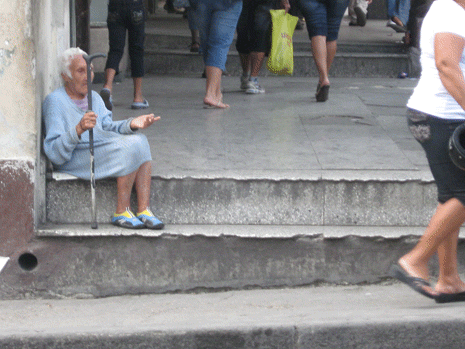
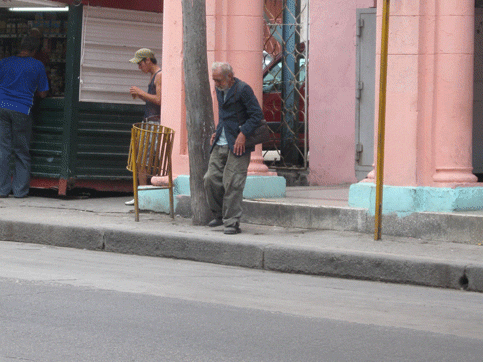
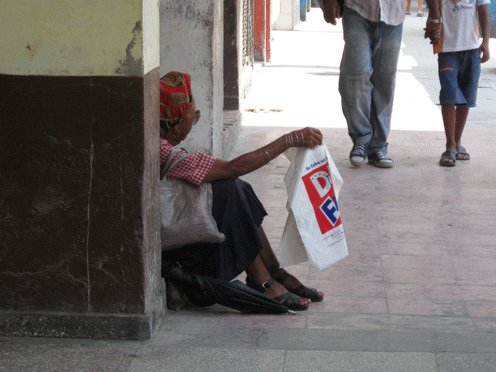
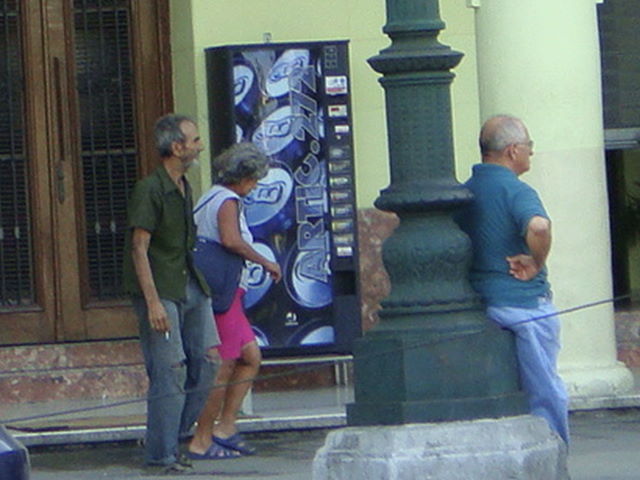

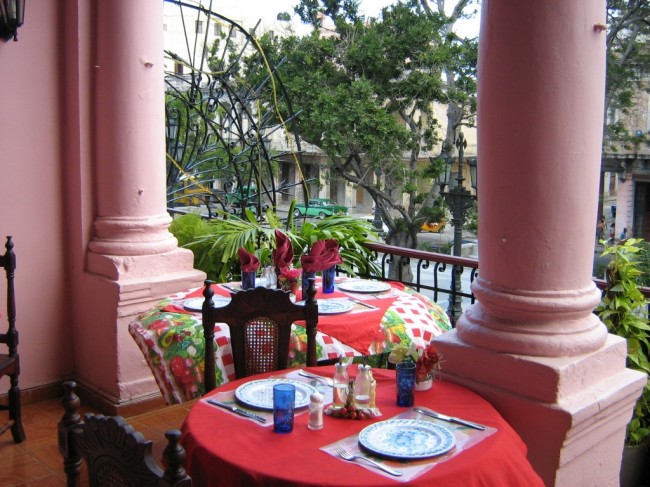
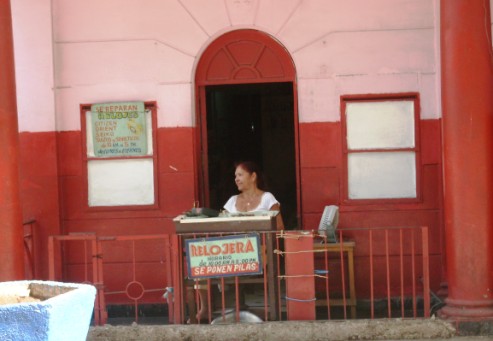
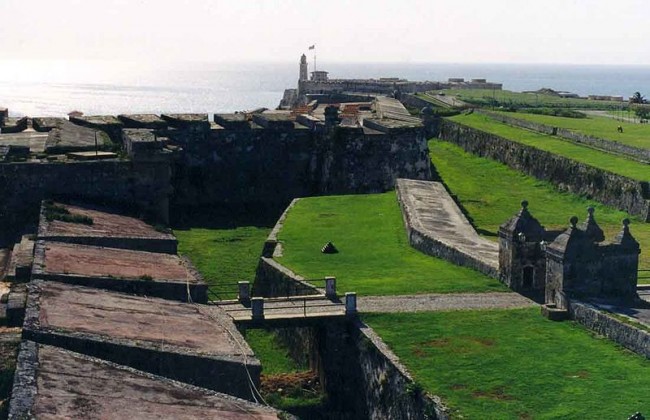
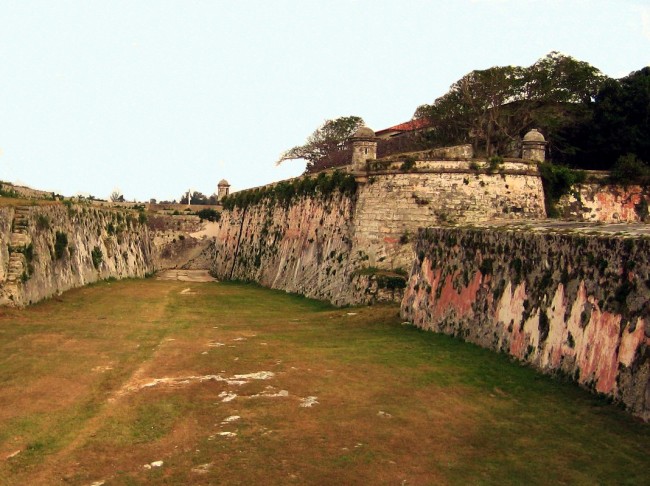
 Any nation whose history is full of acts of violence diminishes relevance to figures or events that are removed from this kind of acts. If violence is also promoted as the paradigm of behavior, the concept ends up entrenching so deeply in the conscience of society that it establishes a false identification between war and history, between revolutions and patriotism, thus minimizing other forms of patriotism, and other ways of making history and promoting the culture.
Any nation whose history is full of acts of violence diminishes relevance to figures or events that are removed from this kind of acts. If violence is also promoted as the paradigm of behavior, the concept ends up entrenching so deeply in the conscience of society that it establishes a false identification between war and history, between revolutions and patriotism, thus minimizing other forms of patriotism, and other ways of making history and promoting the culture. No similar project could be repeated until the mid-twentieth-century, when the tunnel under the Bay of Havana was built: both works are part of the Seven Wonders of Cuban Engineering of all times.
No similar project could be repeated until the mid-twentieth-century, when the tunnel under the Bay of Havana was built: both works are part of the Seven Wonders of Cuban Engineering of all times.
 When the 32nd edition of the Havana International New Latin American Film Festival opened, I commented on the event’s programme and the expectations by genres, nations and other details of interest, based on the preliminary information offered by the organizers. Now that the party is over, we need to recap the Cuban film industry, whose producers went through pains when competing against Argentina, Mexico, Brazil and other emerging film regional producers of countries in a better financial situation than our island’s.
When the 32nd edition of the Havana International New Latin American Film Festival opened, I commented on the event’s programme and the expectations by genres, nations and other details of interest, based on the preliminary information offered by the organizers. Now that the party is over, we need to recap the Cuban film industry, whose producers went through pains when competing against Argentina, Mexico, Brazil and other emerging film regional producers of countries in a better financial situation than our island’s.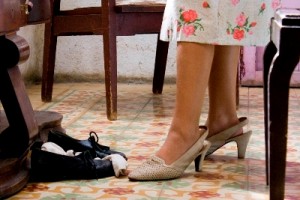 Among the 28 animation films in competition—3 of which were from Cuba—Nikita Chama Bom by Juan Padrón-Blanco was well admired. He gave us a pleasant island alternative to a world in nuclear war. Also well received was Pravda—by the mentioned writer Eduardo del Llano—which features the character of Nicanor, detained by the police in the early morning for doing graffiti.
Among the 28 animation films in competition—3 of which were from Cuba—Nikita Chama Bom by Juan Padrón-Blanco was well admired. He gave us a pleasant island alternative to a world in nuclear war. Also well received was Pravda—by the mentioned writer Eduardo del Llano—which features the character of Nicanor, detained by the police in the early morning for doing graffiti.
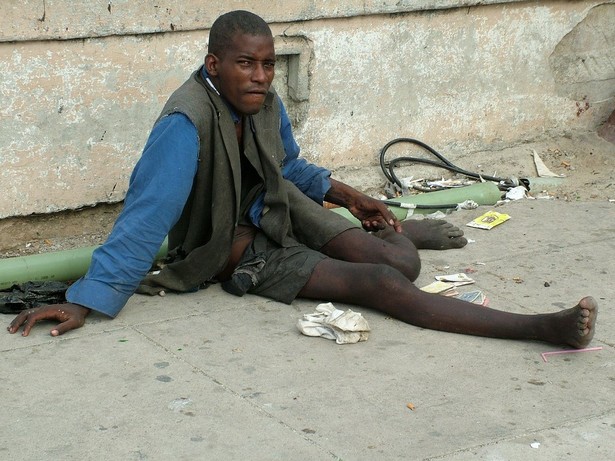
 Photos: Francis Sánchez
Photos: Francis Sánchez The cardinal, in January’s Mass that dealt with the message from Pope Benedict XVI with which he opened a new year — “Religious Freedom: Road to Peace” — when even the period the government had given to itself had expired, gave a review of the ideas of some liberties with names, and showed himself to be excited by the results of the mediation of the Church and in particular by his own role. The magazine “New Word“, by the Archdiocese of Havana, described his speech: it said “[he] has a ‘moral certitude’ that in the next few months other prisoners ‘sanctioned for some type of event connected with political postures or actions’ would be set free”. In addition, by the way, he invited his listeners to “free your hearts of old throwbacks and, feeling yourselves to truly be free, assume a vision in reconciliatory truth among all Cubans.”
The cardinal, in January’s Mass that dealt with the message from Pope Benedict XVI with which he opened a new year — “Religious Freedom: Road to Peace” — when even the period the government had given to itself had expired, gave a review of the ideas of some liberties with names, and showed himself to be excited by the results of the mediation of the Church and in particular by his own role. The magazine “New Word“, by the Archdiocese of Havana, described his speech: it said “[he] has a ‘moral certitude’ that in the next few months other prisoners ‘sanctioned for some type of event connected with political postures or actions’ would be set free”. In addition, by the way, he invited his listeners to “free your hearts of old throwbacks and, feeling yourselves to truly be free, assume a vision in reconciliatory truth among all Cubans.”